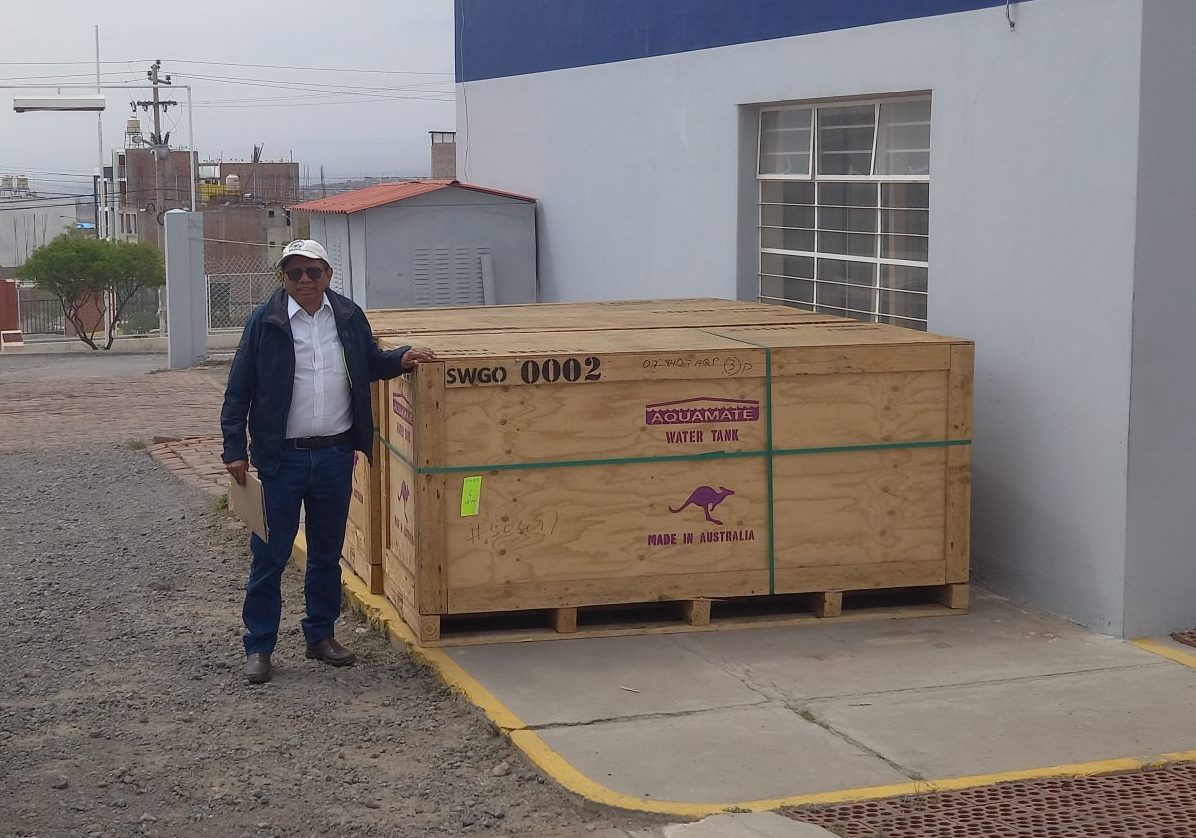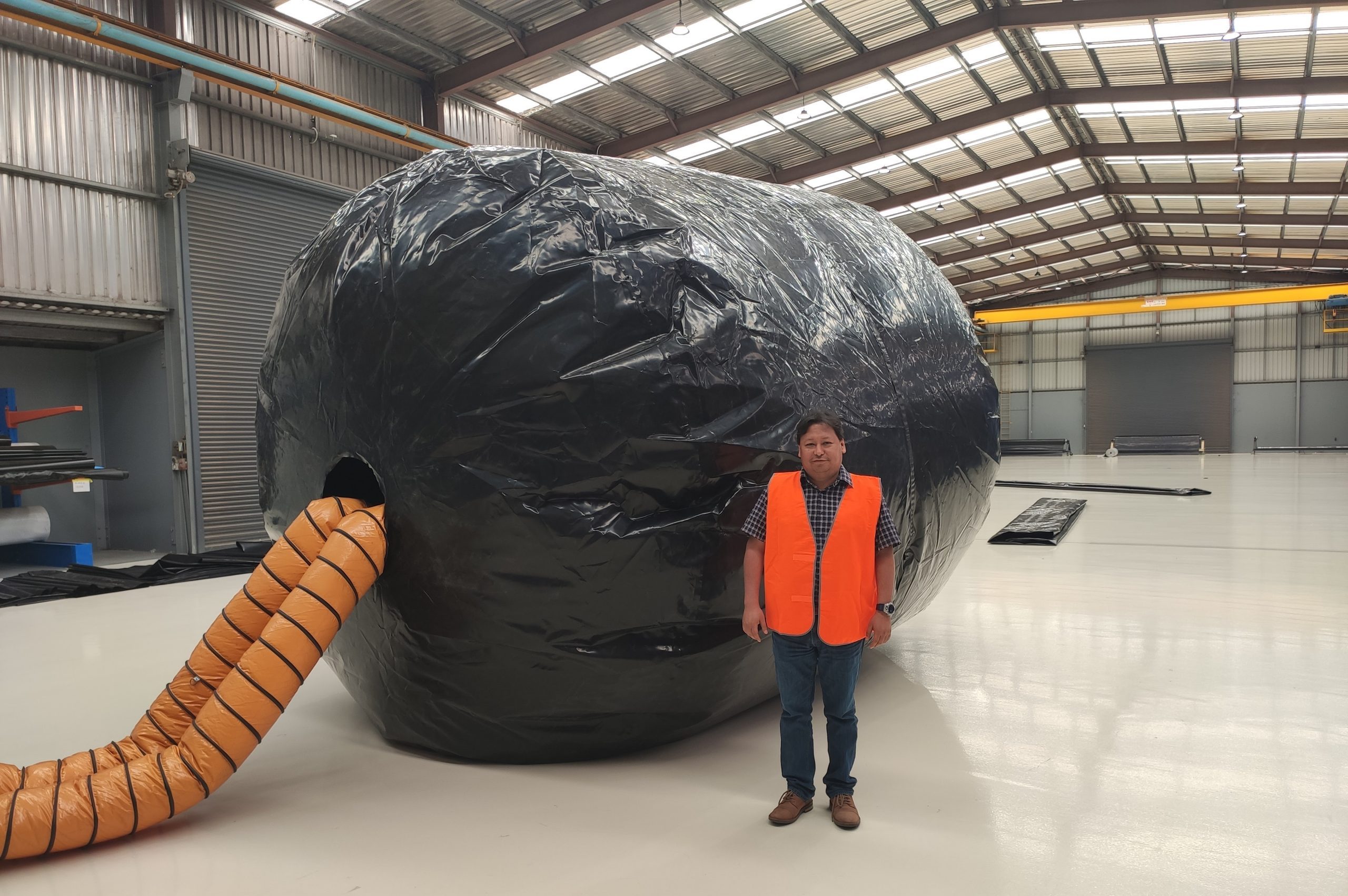The need for specialised astronomy infrastructure can sometimes result in unexpected partnerships – and may open a new market for an Australian company worth approximately US$200-300 million.
In 2020, Dr Jose Bellido Caceres from the University of Adelaide approached AAL with an opportunity to support an Australian business supplying prototype water tanks to the Southern Widefield Gamma-ray Observatory (SWGO) – proposed to be built in South America.
Gamma-rays can’t be directly detected from the ground but their effect on matter can be observed – and a body of water creates an excellent viewing medium. To make the SWGO viable, the project team had to secure a large supply of bespoke water tanks lined with impermeable plastic membranes (or bladders). They found what they needed in Aquamate, an Australian business based in Adelaide.
After learning of the project, AAL worked with the Entrepreneur’s Programme (sponsored by the Department of Industry, Science and Resources) and the Department of Education’s NCRIS program to support Aquamate and the University of Adelaide with funding to build a series of prototypes. Since then, three prototype detectors have been delivered to candidate observatory sites in Mexico and Peru.
Two further observatories (which may require up to 35,000 water tanks) are also seeking prototypes from Aquamate. One of these is a neutrino observatory involving scientists from Harvard University and NASA’s Jet Propulsion Laboratory, while scientific teams from Germany have already purchased plastic bladders worth US$22K.
After more than 20 years of designing, manufacturing and installing water storage tanks, I never expected to be supplying infrastructure for a cutting-edge gamma-ray observatory in South America!
Gamma-rays are the most energetic form of light in the universe, existing at the complete opposite end of the electromagnetic spectrum to radio waves. They are produced by extreme objects and events, like pulsars and supernovas, or by the merger of two black holes.
The highest energy gamma-rays are difficult to detect directly, however we can observe them indirectly because of the way they interact with matter. Upon entering the Earth’s atmosphere, gamma-rays produce ‘showers’ of high-energy particles. These particles create a very faint blue flash which astronomers observe using highly sensitive detectors. It is easier to observe these flashes in bodies of water, hence the decision to use Aquamate’s water tanks for the SWGO.
As the blue flash is very faint, Aquamate needed to design the SWGO water tanks to be completely light-tight. Cleverly, Aquamate found ways to change their design, making sure the tanks (originally leak-proof) were now also 100% light-proof, allowing no other light source to pollute the detections. The materials were also designed to make transportation and assembly as easy as possible, as the shipping crates had to be hauled over mountains to reach remote observatory sites in South America and the tanks put together using only basic tools.
Throughout the course of the collaboration, Aquamate CEO Danny Di Iorio said he enjoyed working closely with Dr Bellido Caceres to understand these and many other scientific requirements. “Working with clever people to solve some complicated problems – after 20 years building water tanks, this has been a really different and interesting project for Aquamate.”
Working with science is very different to working with industry. In industry, the decision has already been made – a customer needs water tanks and we supply them. With science, it’s a different approach; you’re collaborating to come up with a technical, bespoke solution.
For more information, click this link to see University of Adelaide’s news story, Water tanks: windows to southern sky’s soul.



